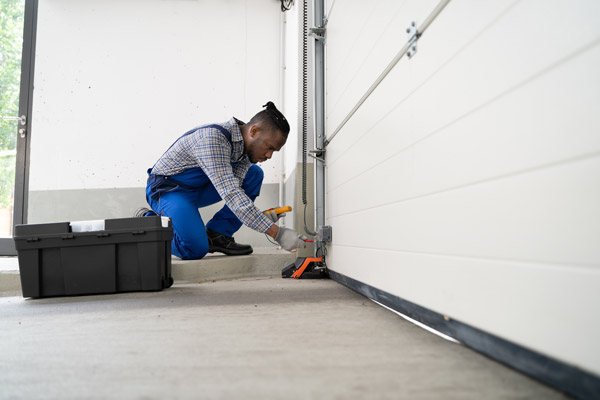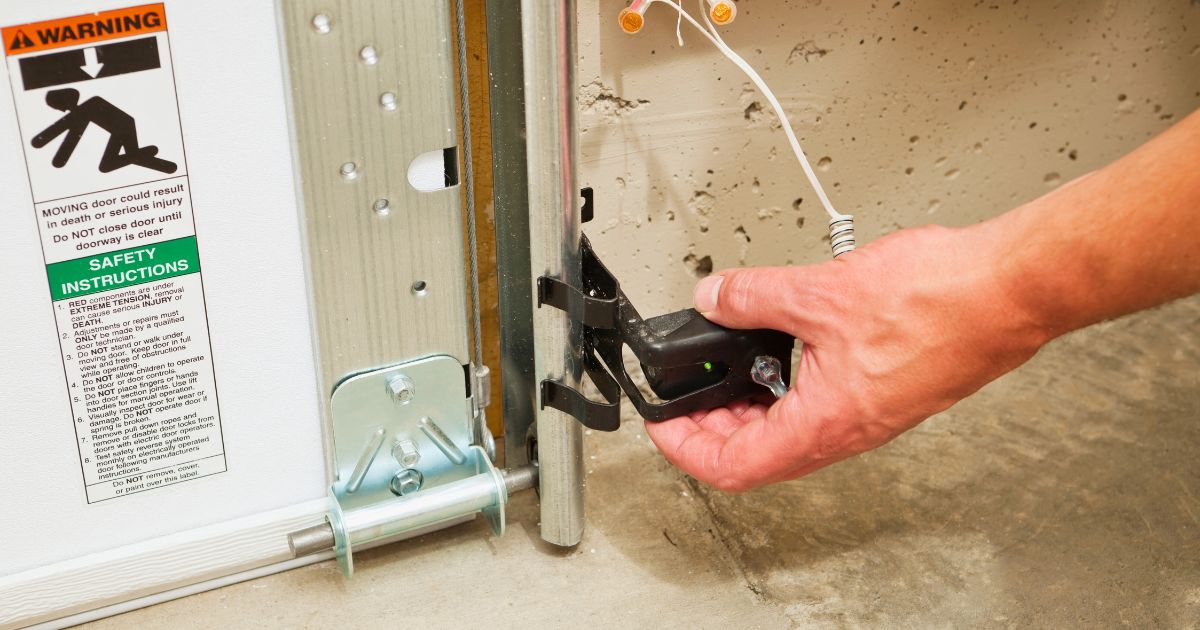In the realm of home maintenance, few things are as frustrating as a malfunctioning garage door. At the heart of this modern convenience lies a critical component: the garage door sensor. These unassuming devices play a pivotal role in ensuring the safety and functionality of your garage door system. As we delve into the intricacies of garage door sensor repair and troubleshooting, we'll equip you with the knowledge to tackle common issues and recognize when it's time to call in the professionals.
Understanding Garage Door Sensors
Garage door sensors typically consist of two units placed on either side of your garage door opening. They emit an invisible infrared beam across the doorway, forming a safety barrier. If this beam is interrupted while the door is closing, it triggers the door to reverse, preventing potential accidents or damage.
Common Causes of Sensor Malfunction
Sensor Obstruction: Objects blocking the path between the two sensors can prevent the infrared beam from connecting, causing the door to refuse to close.
Power Supply Issues: If your garage door sensor isn't receiving power, it won't function at all. This issue is often indicated by the sensor lights being completely off.
Dirty or Obstructed Sensor Lenses: Over time, sensor lenses can accumulate dirt, dust, and grime, interfering with the infrared beam.

Misalignment: If the sensors are not facing each other directly, the infrared beam may not connect, causing the system to malfunction.
Wiring Problems: Loose or damaged wiring can disrupt the communication between the sensors and the garage door opener.
Environmental Factors: Direct sunlight can sometimes overwhelm the sensors, preventing the garage door from closing.
Identifying a Faulty Sensor
- Check the LED Lights: If these lights are off or blinking, this could signal a problem with alignment, power supply, or the sensors themselves.
- Inspect for Obstructions: Ensure there's nothing blocking the path between the sensors.
- Test the Signal: Try adjusting the sensors slightly to see if you can get the receiving unit's light to turn on, indicating proper signal reception.
- Examine for Moisture: Excessive moisture can interfere with sensor functionality.
- Direct Testing: Temporarily connect the sensors directly to the garage door opener unit to isolate the issue.
Step-by-Step Troubleshooting Guide
Clean the Garage Area and Sensors: Remove any debris and gently clean the sensor lenses with a soft, dry cloth.
Check and Adjust Alignment: Ensure both sensors are at the same height and pointing directly at each other. Use a level to confirm they're perfectly aligned.

Inspect and Secure Wiring: Examine all visible wiring for signs of damage or loose connections. Turn off power before handling any electrical components.
Test Sensor Functionality: After cleaning and adjusting, test your garage door to see if the issue is resolved.
Check Power Supply: Verify that the sensors are receiving power. Check your circuit breaker and ensure the garage door opener is plugged in.

Isolate the Problem: Try connecting the sensors directly to the garage door opener unit, bypassing any external wiring.
Consider Replacement: If none of the above steps resolve the issue, it may be time to replace your garage door sensors.
Tools and Materials Needed for Repair
- Screwdrivers (both Phillips and flathead)
- Wire cutters and strippers
- Pliers
- Step ladder
- Level
- Voltage tester
- Safety glasses and work gloves
- New garage door sensors (if replacement is necessary)
- Electrical tape
- Wire nuts
- 18- to 22-gauge wire (for any wiring replacements)
Safety Precautions
- Turn off power to the garage door opener before beginning any work.
- Wear safety glasses and work gloves to protect yourself from potential injuries.
- Follow the manufacturer's instructions carefully for your specific sensor model.
- Avoid placing heavy objects or tools near the sensors to prevent accidental damage.
- If you're unsure about any aspect of the repair process, seek professional help.
Environmental Factors Affecting Sensor Performance
Temperature Fluctuations: Extreme temperatures can affect the electronic components of your sensors, potentially causing misalignment or malfunction.
Humidity and Moisture: High humidity levels can lead to condensation inside the sensor housing, causing short circuits or corrosion.
Sunlight and UV Exposure: Direct sunlight can interfere with infrared sensors and degrade plastic components over time.
Wind and Dust: Windy conditions can blow debris onto the sensor lenses, obstructing the infrared beam.
Snow and Ice: In colder climates, snow drifts or ice buildup near the base of the garage door can block sensors or trigger false readings.
Types of Garage Door Sensors
Photoelectric (Infrared) Sensors: The most common type, using an infrared beam to detect obstructions.
Pressure Sensors: Installed at the bottom edge of the garage door, these detect physical contact with objects or people.
Ultrasonic Sensors: These emit ultrasonic sound waves to detect obstructions, offering high precision.
Smart Sensors: Integrating with smart home technology, these allow for remote control and monitoring via smartphone apps.
Maintenance Schedule
- Monthly: Conduct a visual inspection and clean the sensor lenses.
- Annually: Have a professional technician perform a thorough inspection and maintenance check.
- Every 5 Years: Consider replacing your sensors to ensure optimal performance and safety.
DIY Solutions vs. Professional Help
While many garage door sensor issues can be resolved with DIY solutions, there are times when professional help is necessary.
DIY Solutions:
- Cleaning and aligning sensors
- Checking and securing wiring connections
- Clearing obstructions from the sensor path
Call a Professional When:
- You're unsure about any aspect of the repair process
- The issue persists after attempting DIY solutions
- You need to maintain warranty validity
- There are complex electrical issues involved
- You require emergency repairs
Conclusion
Garage door sensors are crucial for the safety and functionality of your garage door system. By understanding common issues, following proper troubleshooting techniques, and maintaining a regular inspection schedule, you can ensure your sensors continue to operate effectively. Remember, while many problems can be resolved through DIY methods, there's no shame in calling a professional when faced with complex issues or safety concerns. With the knowledge gained from this guide, you're now better equipped to tackle garage door sensor problems and maintain a safe, functional garage environment for years to come.

